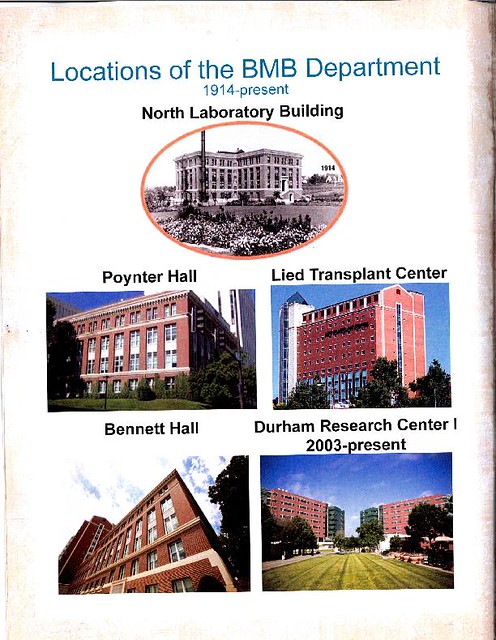Recently, Pink Floyd founder and (Boycott Divestment and Sanctions) BDS supporter Roger Waters publicly called on musician Neil Young not to perform in Tel Aviv, Israel. In his letter to Young, Waters wrote:
“That you would lend support to, and encourage and legitimize, with your presence, a colonial apartheid regime, largely settled from Europe, that seeks to confine the native people of the land, either in exile or in second class status in reservations and ghettos. Please, brother, tell me it ain’t so.”
The same man who floats pig shaped balloons with Stars of David during his performances would be best advised to restrain his own displays of anti-Semitism and check his juvenile and inaccurate rhetoric. Being a rock star doesn’t automatically qualify Mr. Waters as an expert on the complicated backdrop of the middle-east. Although this seems to fit the BDS profile.
While peace must ultimately come from a two-state solution (that I remind Mr. Waters, was initially agreed upon by the U.N. General Assembly as Resolution 181, and this Partition Plan (read the 3rd paragraph) was accepted by Israel, but not the Palestinians), I find it highly ironic that Mr. Waters found it necessary to make the statement “largely settled from Europe.” Despite the inaccuracy of this comment – most Israeli Jews came from North African Arab countries, after being massacred and expelled from Spain and Portugal in the 15th century – I would ask Mr. Waters where he would have preferred the remnants of the European Jewish community who weren’t murdered in Hitler’s ovens to go? Countries like Canada (and apparently the UK) actually had undisclosed policies regarding the number of Jewish immigrants they would accept: Canada’s chief immigration policy maker, Frederic Blair, was quoted as saying “None is too many.”
For the record, I have Israeli roots. Encountering virulent anti-Semitism in Canada, I moved to Israel in the early 1980s. In fact the street that I lived on in Canada was named after a former medical school dean known for his anti-Semitic views and enforcement of “quotas” for the number of Jews allowed into medical school. If not anti-Semitism, why else would a totally non-religious, non-Messianistic, liberal and peace-seeking young Jewish person leave Canada, a country of infinite opportunity?
However, despite my Israeli background, I do not number amongst those Jews who automatically defend Israel and Israeli policy; or those who believe that criticism of Israel should not be voiced in public to provide support for anti-Israel and anti-Semitic groups, such as the BDS. As an undergraduate and graduate student in Jerusalem in the late 1980s and 1990s, I attended peace rallies and was active in supporting dialog towards a two-state solution – long before such a term was openly uttered in Israel. I wrote letters to the editor that were published in Israel’s Haaretz newspaper, blasting Israel’s right wing then prime minister (PM) Shamir for his obstinate stances refusing to advance peace talks in Madrid, and for prolonging the status quo. A negotiated two-state solution, similar to that proposed by President Clinton, accepted by then Israeli PM Barak, and rejected by former Palestinian Authority leader Arafat is the only way forward.
Even my novels depict my views. Welcome Home Sir is about Ethan Meyer, an Israeli principal investigator (PI) with post traumatic stress disorder running a lab in the US. The novel is current, and there is an encounter (highly fictional) between Ethan and a PI colleague from Lebanon. I note fictional because although Ethan’s views are similar to my own, I have excellent relationships with all my colleagues from middle-eastern countries. In this imagined encounter, Ethan bemoans being attacked for being an Israeli, while his own views are diametrically opposed to those of Israel’s PM Netanyahu. Between a rock and a hard place is his (and my) interpretation.
The current acute mini-war between Israel and Hamas in Gaza is horrible; the loss of life, including Gazan women and children is sickeningly tragic, and the images hard for anyone who holds life dear difficult to accept. The BDS blame-game that the situation is Israel’s fault because of the siege on Gaza is irrelevant, because (despite the fact that the siege obviously hasn’t prevented the smuggling in of rockets and rocket parts) when a country and its citizens are being indiscriminately fired upon, that country has a responsibility to protect its citizens in any way possible. Even prior to the recent outbreak of fighting, Hamas was still firing occasional rockets into Israeli towns.
Hamas’ charter calls for the destruction of Israel. Not a two-state solution, but a dissolution of Israel. One can argue whether they are “holding hostage” a civilian population in Gaza. To a certain extent they are; building tunnels under peoples’ homes to infiltrate into Israel and commit murder, hiding rockets in UNRWA schools, hospitals and mosques, urging citizens to remain in their homes when the Israeli Defense Forces have given warning that they will attack. These are cruel and cynical means of trying to recruit sympathy from the world. But such is Hamas. It’s horrible, but I think they are torn between: 1) wanting to achieve “victory” by hitting a populated area of Tel Aviv and killing a number of Israelis, and 2) wanting to accrue a huge number of their own casualties to show the world that they are victims of Israeli aggression.
Much has been said about the ‘disproportionate use of force’ by Israel. Needless to say, there would be many more casualties on the Israeli side without the Iron Dome anti-missile systems and secure rooms in place in most major Israeli population centers. Hamas rockets are aimed at population centers. Hamas ‘psychological warfare’ has even included the sending of messages to Israelis to mock them and point out that Hamas is forcing them to run for cover and hide from their rockets. What a point of pride. But it’s necessary to note that despite the horrific results of Israel’s attempts to stop the rocket fire, which include casualties to children and civilians, no one in Israel revels in the suffering of Gazans. At the same time, this is not a sporting event where the game would be more interesting and sporting if the casualties were more balanced on both sides. The fact that most of the casualties are in Gaza does not legitimize Hamas’ terror. It merely reflects their cynicism and complete lack of empathy for their own population.
This desire to be the victim is highlighted by the Hamas refusal to accept a ceasefire that was outlined by the Egyptians with support from Palestinian leader Abu Mazen. The Egyptian foreign minister went so far as to conclude that all of the deaths that occurred since Hamas refused the ceasefire and began shelling Israeli cities and towns again with Iranian-made rockets were Hamas’ responsibility. In an interview, Tony Blair said that the UK would respond in the same manner if its citizens were attacked by rocket fire. This time, Hamas is cut off from support from most of the Arab world, which seems to have lost patience with Hamas’ lack of responsibility to its own people. There is no money to pay 43,000 civil citizens, and poverty reaches 38%, yet the Hamas leaders have made millions (http://www.ynetnews.com/articles/0,7340,L-4543634,00.html) and wasted huge amounts of money on rockets to fire into Israel. These types of disagreements and anger within the Palestinian and Arab countries are entirely ignored by groups such as the BDS, who constantly look for cheap one-sided clichés to support their ‘cause.’
None of this is helped by a biased press. As a science-writer for The Guardian, I have been disappointed several times by the papers’ treatment of issues concerning the middle-east. The first time was when I wrote an opinion post about why an academic boycott of Israel is wrong and hypocritical (http://www.theguardian.com/science/occams-corner/2012/sep/11/academic-boycotts-science-hypocrisy-israeli), and a day later the paper published a “rebuttal” by BDS proponent Ben White, who is well known for anti-Semitic comments and tweets, including Holocaust denial (http://www.adl.org/israel-international/anti-israel-activity/c/profile-ben-white.html) and his tweet that “If you need another reason to support a boycott of Habima (an Israeli acting troup slated to perform in the UK), I present a massive picture of (Jewish UK author) Howard Jacobson’s face.”
Perhaps even more serious is the recent headline I read in the Guardian following Hamas’ failure to accept the Egyptian-Palestinian endorsed ceasefire proposal that Israel accepted: “Gaza conflict resumes after five-hour truce as new ceasefire talks continue.” The New York Times, on the other hand, broke with: “Rockets Fired From Gaza as Humanitarian Pause Ends.” While one might contend that I am nitpicking, the Guardian gives the impression that the truce just magically ends, with equal responsibility from both sides. No wonder the BDS movement tends to pick up more supporters in the UK: unethical and misleading information (and this is probably just the tip of the iceberg) tends to lead people to the wrong conclusions. But the rabid anti-Semitism displayed by BDS leaders marginalizes and seriously undermines the credibility of this organization.







